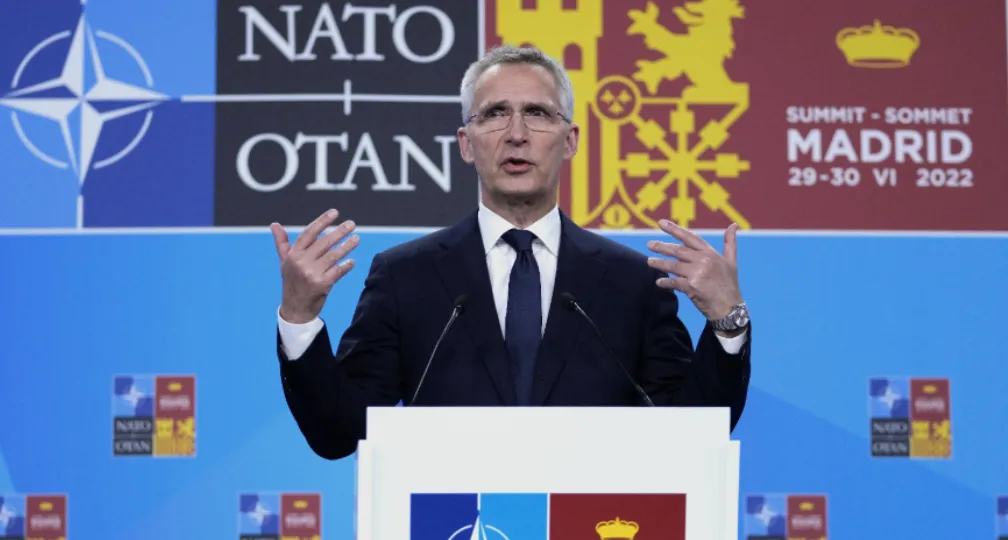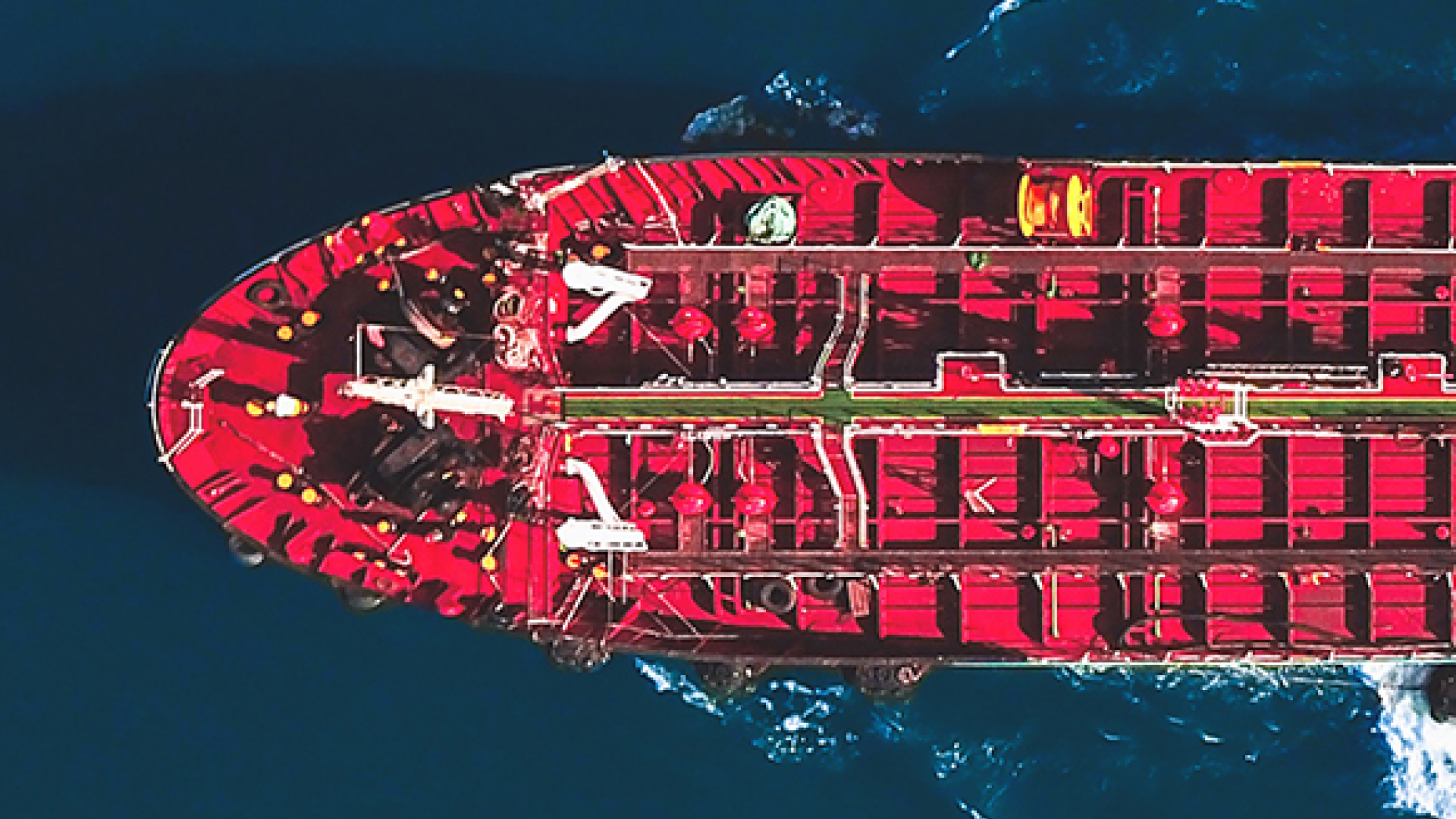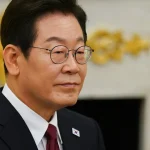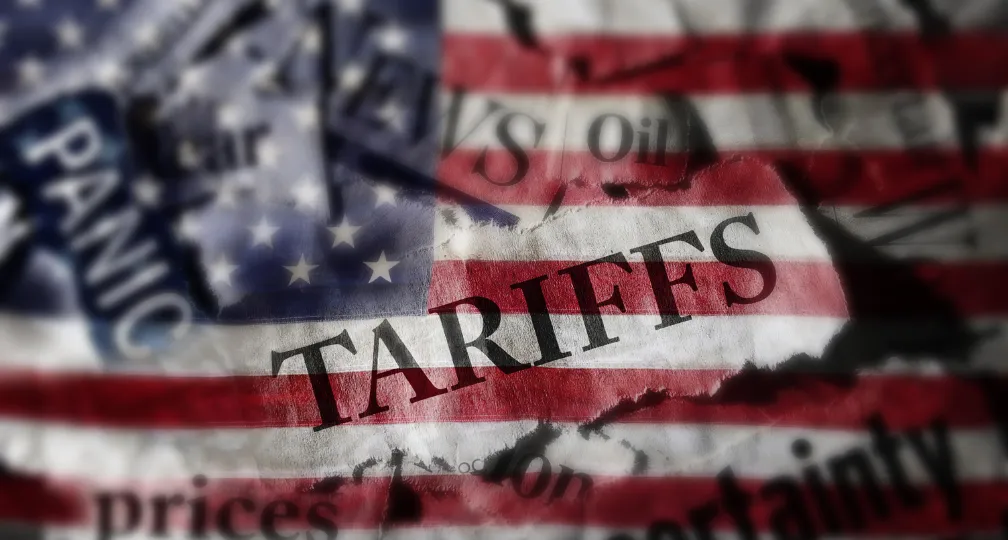Impact of the war in Ukraine sees Japan at the mercy of bigger players

Moscow’s actions in light of it regarding NATO’s eastward expansion as a result of the accession of the nations of Eastern Europe as a threat have in fact encouraged unity in Europe. They prompted Sweden and Finland to decide to join NATO, leading to the body’s northward expansion and a strengthening of the organization.
This gives rise to a number of questions.
In such circumstances, what will the future security landscape in Europe look like?
How will the United States — taking a role as the core of Europe’s defense — allocate its defense resources between Russia’s threats and its ongoing tensions and competition with China?
And how will these issues influence the Indo-Pacific region including Japan?
Restrained posture
In response to the war in Ukraine, NATO adopted a new strategic concept — the first revision in 12 years — at its summit meeting held in Madrid in June in a bid to strengthen defense capabilities against Russia.
However, it has become apparent that the subsequent boosting of its forward-deployed forces has been conducted in a restrained manner, not necessarily matching the strong statement made in the strategic concept that it would “defend every inch of Allied territory.”
The new concept states Russia “is the most significant and direct threat to Allies’ security” and focuses on bolstering forward defense.
NATO leaders also agreed on transforming the NATO Response Force from the then-40,000 to well over 300,000 troops.
Nevertheless, this doesn’t mean the actual forward defense posture has been greatly strengthened.
NATO has been deploying multinational battalion battlegroups in the Baltic states and Poland, and with Russia’s invasion of Ukraine, it established four additional battalion battlegroups in Slovakia, Hungary, Romania and Bulgaria. But the total number of troops serving in these groups was only about 10,000 as of June.
Although NATO leaders said in a joint statement after the summit meeting that they had committed to deploy additional forces on the eastern part of the alliance, scaled up from the existing battlegroups to brigade-size units, they said the boost would be made “where and when required,” without making clear the timing of the deployments or whether the units would be permanently stationed. (Later, in September, NATO announced that around 100 German soldiers had arrived in Lithuania to make up the command unit of a new brigade. While it has been explained that the brigade’s command staff will remain permanently in the Baltic nation, combat units under this command seem to join them on rotation for exercises.)
At the same time as the NATO summit, U.S. President Joe Biden announced that the U.S. would enhance its military presence in Europe — in addition to the surge of 20,000 U.S. service members sent to the region since Russia’s invasion of Ukraine — including setting up a permanent Army V Corps Headquarters forward command post in Poland and additionally deploying a rotational brigade combat team in Romania, none of which actually represents a dramatic reinforcement of troops.
While the establishment of an army headquarters in Poland indicates the U.S. stance of making the country a core base for forward forces, the bulk of U.S. troops in Europe, some 40,000, remain in Germany, constituting a two-tier posture with the main force being held back from the eastern flank.
Such a restrained forward posture is in clear contrast to that seen during the Cold War when NATO had more than 400,000 troops belonging to eight army corps stationed in West Germany along its eastern border.
NATO’s strategic advantage
The number of NATO’s forward-deployed forces is not increasing dramatically partly because of European states’ lack of preparedness, but the main reason is the fact that even before the war in Ukraine started, NATO surpassed Russia in terms of conventional forces with a total strength of some 3.5 million military personnel held by its member states.
The war in Ukraine has depleted Russian military forces, leading to the weakening of its military power — the core of its national power, further accelerating this imbalance.
As of June, Russia had concentrated its military forces in the eastern region of Ukraine and had managed to advance in the region, although retreating at times.
But Russian troops suffered great damage, with some 35,000 soldiers lost since the beginning of the war, according to the Ukrainian defense ministry.
Considering that Russia’s total ground forces are estimated to be around 330,000, it is likely that at that point, NATO’s forward forces in the eastern flank of 30,000 and troops of 300,000 in host nations combined alone already exceeded the total standing ground forces of the Russian military.
Such a decline in Russian military strength has constituted an underlying tone that is unlikely to recover in a short term.
While the Ukrainian military is on the one hand advancing and minimizing damage to its forces by making use of its maneuverability and on the other hand weakening the enemy by using precision-guided munitions provided by countries including the U.S., Russia’s forces are suffering more and more damage due to their low maneuverability and the poor accuracy of their artillery and missiles.
In other words, there will be an attrition of troops for Russia as long as the war continues, and even if the war ends, the country will not be able to recover its forces to a pre-war level immediately because of heavy personnel and equipment losses as well as a decline in the capacity to produce weapons.
While Russia has an advantage in its possession of nuclear weapons — and there have been concerns over the possibility of Moscow using tactical nuclear weapons — the use of such weapons would not necessarily change the trajectory of the war in Russia’s favor, as its military could also be damaged and affected by its own attacks.
As Russia faces an increasingly uphill battle, the U.S. is continuing to provide weapons to Ukraine with a strong determination to weaken Russian military power to a level where it won’t be able to make similar invasions in the future, presumably through a so-called “bloodletting” strategy.
In April, U.S. Secretary of Defense Lloyd Austin admitted such a stance by saying, “We want to see Russia weakened to the degree that it can’t do the kinds of things that it has done in invading Ukraine.”
The new U.S. National Security Strategy released in October also seems to endorse this vision by stating, “America is helping to make Russia’s war on Ukraine a strategic failure.”
Therefore, while NATO’s increase in forward presence forces is aimed at responding to short-term threats posed by Russia, its restrained force level can only be accurately understood in combination with the decline in Russian military capabilities accelerated by the war as well as the U.S.’ bloodletting strategy aimed at pushing such decline further.
NATO needed to ramp up forward presence forces in a visible way and heighten preparedness of reinforcement forces in order to reassure Eastern European countries directly facing Russian threats.
But at the same time, the forward presence of troops was not significantly increased, probably because that was affected by the recognition, although not explicitly stated, that Russian military capabilities would surely decline in the medium to long term relative to NATO.
On the other hand, it is also true that while Russian forces are continuing to bleed, it is not realistic to expect them to reach extinction, and we cannot foresee at present where the bottom line is for them.
Therefore, it is highly likely that NATO’s intermediate plan to boost forward forces will be gradually put into place to prepare for short-term uncertainties and will be retained for some time.
But in the long run, there is a possibility that the plan will be revised so that European NATO member states like Germany and France are asked to play a bigger role in responding to declining Russian military capabilities. In the meantime, the surge of U.S. troops will remain constant.
Indo-Pacific impact
How will such changes in military balance in Europe impact the U.S. shift to the Indo-Pacific region?
The U.S. military will increase its force posture in Europe by sending more destroyers and fighter jets, but the major boost would be ground troops including the two brigade combat teams deployed as part of a 20,000-plus additional troops extended to the region and one team to be newly deployed.
Meanwhile, the U.S. military is planning a major Marine Corps force transformation, advocating a shift to smaller, dispersed units equipped with missiles and unmanned vehicles in response to China’s anti-access/area denial threats.
As part of the move, the Marine Corps is in the process of getting rid of legacy equipment such as tanks, and retired tanks are planned to be transferred to the army.
The army is also focusing on the buildup of multidomain task forces that could employ long-range ground-launched missiles.
These moves indicate that there is an abundance of units like conventional brigade combat teams deployed to Europe to say the least.
This abundance of conventional units, however, represents the reality that while the U.S. regards China in its new National Security Strategy as “the only competitor,” its military is yet to optimize its overall force structure in line with its strategy to shift focus to China.
Accelerating shift to China
Units like brigade combat teams, which are fit to be deployed to Europe, are not the type of forces that can cope with China’s sea, air and missile capabilities in the West Pacific, a strategic environment completely different from Europe which shares land borders with Russia.
If the legacy forces are widely retained throughout U.S. forces as an excuse for preparing for weakened Russia, which may be dealt with by European states, and the prioritization of military capabilities to shift to cope with China is hampered as a result of this retention, that might be the biggest concern the war could bring to the Indo-Pacific.
And the fact that even the U.S. has not been able to operationalize ground-launched missiles and unmanned assets in the Indo-Pacific region means that Japan could be put in a more strategically critical position compared with U.S. allies in Europe.
This is because the fact that the U.S. is not yet fully prepared to offer sufficient means in the Indo-Pacific region, unlike in Europe, indicates the key to regional security lies in Japan’s efforts to boost its defense capabilities, including possessing counterstrike capability, and to further improve interoperability in the Japan-U.S. alliance.
This would probably be the biggest impact the Russia-Ukraine war could have on Japan.
Both Japan and the U.S. need to be aware of such risks and make this awareness an opportunity to accelerate the shift of defense focus to China.
(Photo Credit: AP / Aflo)

Geoeconomic Briefing
Geoeconomic Briefing is a series featuring researchers at the IOG focused on Japan’s challenges in that field. It also provides analyses of the state of the world and trade risks, as well as technological and industrial structures (Editor-in-chief: Dr. Kazuto Suzuki, Director, Institute of Geoeconomics (IOG); Professor, The University of Tokyo).
Disclaimer: The opinions expressed in Geoeconomic Briefing do not necessarily reflect those of the International House of Japan, Asia Pacific Initiative (API), the Institute of Geoeconomics (IOG) or any other organizations to which the author belongs.


Senior Research Fellow
Hirohito Ogi is a senior research fellow at the Institute of Geoeconomics (IOG) studying military strategy and Japan’s defense policy. Before joining the IOG, Mr. Ogi had been a career government official at the Ministry of Defense (MOD) and Ministry of Foreign Affairs (MOFA) for 16 years. From 2021 to 2022, he served as the Principal Deputy Director for the Strategic Intelligence Analysis Office, the Defense Intelligence Division at the MOD, where he led the MOD’s defense intelligence. From 2019 to 2021, he served as a Deputy Director of the Defense Planning and Programming Division at the MOD. He holds a Master’s degree in international affairs from the School of International and Public Affairs (SIPA), Columbia University, and a Bachelor’s degree in arts and sciences from the University of Tokyo. He is the author of various publications including Comparative Study of Defense Industries: Autonomy, Priority, and Sustainability (co-authored, Institute of Geoeconomics, 2023).
View Profile-
 Analysis: Ready for a (Tariff) Refund?2025.12.24
Analysis: Ready for a (Tariff) Refund?2025.12.24 -
 China, Rare Earths and ‘Weaponized Interdependence’2025.12.23
China, Rare Earths and ‘Weaponized Interdependence’2025.12.23 -
 Are Firms Ready for Economic Security? Insights from Japan and the Netherlands2025.12.22
Are Firms Ready for Economic Security? Insights from Japan and the Netherlands2025.12.22 -
 Is China Guardian of the ‘Postwar International Order’?2025.12.17
Is China Guardian of the ‘Postwar International Order’?2025.12.17 -
 Japan-India Defense in a Fragmenting Indo-Pacific2025.12.10
Japan-India Defense in a Fragmenting Indo-Pacific2025.12.10
 Event Report: The Trump Tariffs and Their Impact on the Japanese Economy2025.11.25
Event Report: The Trump Tariffs and Their Impact on the Japanese Economy2025.11.25 The “Economic Security is National Security” Strategy2025.12.09
The “Economic Security is National Security” Strategy2025.12.09 The Real Significance of Trump’s Asia Trip2025.11.14
The Real Significance of Trump’s Asia Trip2025.11.14 The long road to a South Korea-U.S. trade deal2025.11.26
The long road to a South Korea-U.S. trade deal2025.11.26 Trump’s Tariffs Might Be Here to Stay – No Matter Who’s in Power2025.11.28
Trump’s Tariffs Might Be Here to Stay – No Matter Who’s in Power2025.11.28













